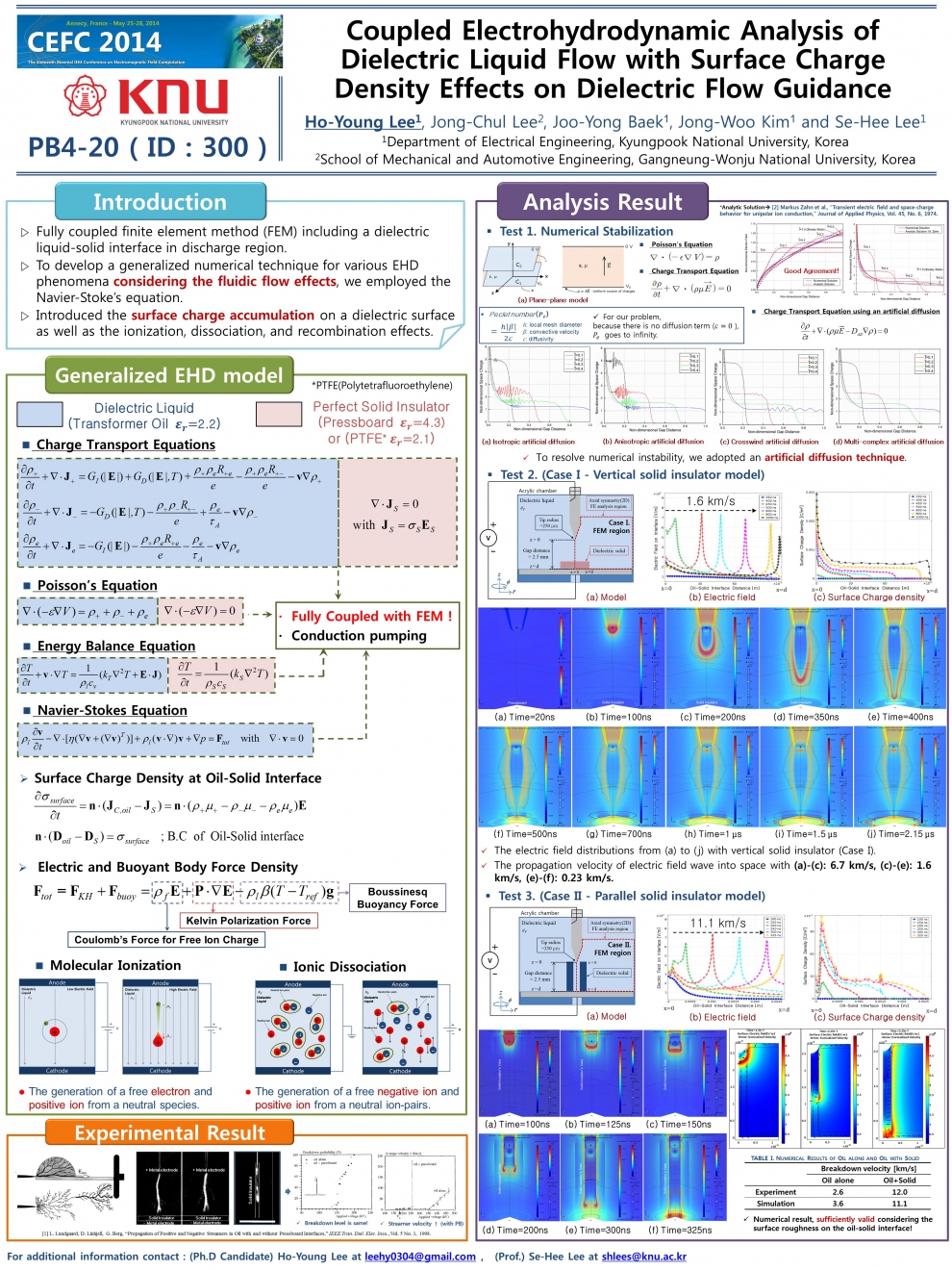
Electrical insulation has been described as the most important component of electrical equipment such as transformers, circuit breakers, vacuum interrupters, and cables. In power electrical systems, such as power transformers, most failures of insulation systems are related to the breakdown of solid insulators. Recently, the prediction of electrical breakdown has become a critical issue in the design of more compact systems for power applications. A fully coupled analysis technique for generalized electrohydrodynamics (EHD) has been developed for use in liquid discharge areas. This technique concentrates on the electrical field-dependent molecular ionization and ionic dissociation phenomena without surface discharge, which are known as tracking. In examining the discharge mechanism for tracking, however, it is important to understand the breakdown phenomena that occur with solid types of dielectric media- however, the detailed mechanism for this has not yet been completely described. To analyze this surface breakdown process quantitatively, we fully coupled the governing equations based on the charge continuity equations for positive ions, negative ions, and electrons, along with the energy balance equation for a temperature field, the Navier–Stokes equation for incompressible fluid flow, and Poisson’s equation for electrical fields. To stabilize our fully coupled numerical model, we first developed and tested a mixed artificial diffusion scheme. Using these fully coupled equations, we analyzed the tracking at the dielectric liquid–solid interface. The free charge was assumed to be zero in the solid region, which was modeled as a perfect insulator. In addition, to simulate the tracking more accurately, charge dynamics were calculated considering the surface charge accumulation at the interface. Some functions and user defined equations were added via COMSOL Multiphysics software and the detailed numerical setup was implemented in that program.
|
